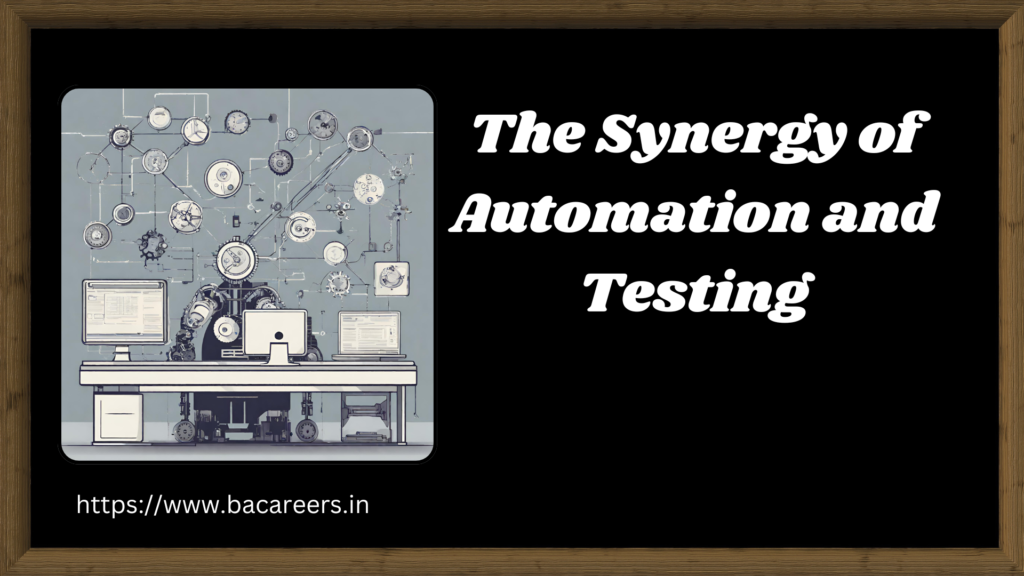In today’s fast-paced digital landscape, where software development cycles are becoming increasingly rapid and complex, the importance of effective testing methodologies cannot be overstated. Software testing plays a pivotal role in ensuring that applications meet quality standards, perform reliably, and deliver exceptional user experiences. Within this realm, automation has emerged as a powerful ally, revolutionizing the way testing is conducted and enhancing efficiency across the software development lifecycle.

The Evolution of Testing
Traditionally, software testing has been a manual endeavor, requiring testers to meticulously execute test cases, document results, and identify defects. While manual testing remains valuable for certain scenarios, its limitations become apparent in the face of tight deadlines, repetitive tasks, and the need for scalability. Manual testing is inherently time-consuming, error-prone, and unable to keep pace with the rapid iterations demanded by agile and DevOps methodologies.
Enter Automation
AutomationTesting addresses these challenges by leveraging specialized tools and scripts to execute test cases, validate functionality, and report results automatically. By automating repetitive tasks, such as regression testing and UI interactions, automation empowers teams to accelerate testing cycles, improve test coverage, and achieve higher levels of accuracy.
Advantages of Automation Testing:
- Speed and Efficiency: Automated tests can be executed much faster than their manual counterparts, enabling teams to identify defects earlier in the development process and expedite time-to-market.
- Repeatability and Consistency: Automated tests ensure consistent execution of test cases, eliminating human errors and discrepancies that may occur during manual testing.
- Scalability: Automation allows for the parallel execution of tests across different environments and configurations, facilitating scalability and reducing testing bottlenecks.
- Regression Testing: Automation is particularly effective for regression testing, where previously validated functionality is tested to ensure that new code changes have not introduced unintended side effects.
- Resource Optimization: By reducing the need for manual intervention, automation frees up valuable human resources to focus on more strategic tasks, such as exploratory testing and test case design.
Integrating Automation into the Testing Process
Successful AutomationTesting requires careful planning, collaboration, and integration within the software development lifecycle. Here are key steps to effectively integrate automation into the testing process:
- Identify Test Cases: Begin by identifying test cases that are suitable for automation. Focus on repetitive, time-consuming, and critical test scenarios that can be automated for maximum impact.
- Select Tools and Frameworks: Choose automation testing tools and frameworks that align with your project requirements, technology stack, and team expertise. Popular automation tools include Selenium, Appium, and Cypress for web testing, and XCTest and Espresso for mobile testing.
- Develop Automated Tests: Develop robust automated test scripts that accurately simulate user interactions, verify functionality, and handle edge cases. Prioritize maintainability, readability, and reusability to ensure long-term success.
- Execute and Analyze Results: Execute automated tests regularly as part of the continuous integration (CI) and continuous delivery (CD) pipeline. Monitor test execution, analyze results, and triage failures promptly to maintain test reliability and effectiveness.
- Iterate and Improve: Continuously iterate on automated test suites based on feedback, evolving requirements, and changes in the application under test. Regularly review and refactor test scripts to optimize performance and maintain alignment with the application’s functionality.
Conclusion
AutomationTesting represents a paradigm shift in software quality assurance, enabling organizations to achieve higher levels of efficiency, reliability, and agility in their testing efforts. By harnessing the power of automation, teams can accelerate testing cycles, enhance test coverage, and deliver high-quality software products that meet the evolving needs of users and stakeholders.
As software development continues to evolve in complexity and scale, the synergy of automation and testing will remain indispensable in driving innovation, mitigating risks, and ensuring the success of digital initiatives across industries. Embracing automation as a core tenet of the testing process empowers teams to navigate the challenges of modern software development with confidence, precision, and speed.
Important Articles :
- Demystifying Stress Testing in Software Testing
- Crafting an Effective Test Plan in Software Testing
- Role of a QA Software Tester: The Guardian of Digital Excellence
- Unveiling the Role of a Functional Software Tester

Business Analyst , Functional Consultant, Provide Training on Business Analysis and SDLC Methodologies.
